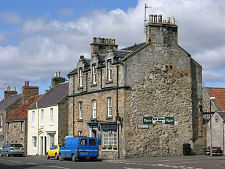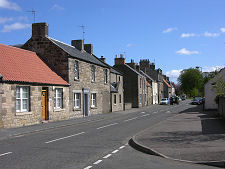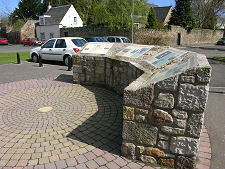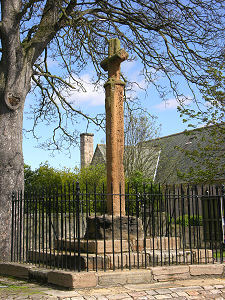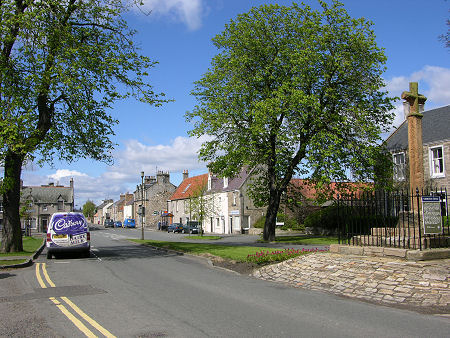 Ormiston Main Street from the East |
The origins of Ormiston date back a thousand years to the ownership of the lands surrounding it by a family called Orme. The estates in the area passed into the ownership of the Cockburn family in 1368, who were to remain the lairds of Ormiston for the next 400 years.
The last of the Cockburn lairds was John Cockburn, who lived from 1679 to 1758. Although often based in London, he issued weekly instructions to those managing the estate by letter. In this way he promoted new and more efficient farming methods, enclosing land with trees and hedges. And from 1740 he turned his attention to Ormiston itself, laying it out as a planned village with a broad main street lined with trees.
The vision of John Cockburn has served Ormiston well ever since. Although its role in the wider economy of East Lothian has changed dramatically, and more than once, over the intervening years, the village remains highly attractive, and much of this is down to the way the east end of Main Street retains its original layout.
John Cockburn sold the estate in about 1750, though not before opening a coal mine nearby: the start of an industry that was to dominate the area around the village for the following two hundred years. By the late 1800s many coal mines were dotted around Ormiston. From 1862 the village was served by a passenger railway line from Edinburgh, which then went on to Pencaitland and Gifford. This was linked to many of the mines by mineral lines.
The most significant pit in the area was at Limeylands, where a pit over 300ft deep gave access to a 4ft thick seam. Here 300 men produces some 350 tons of coal each day. Mining in the area declined after World War II and the last of Ormiston's pits closed in 1961. Meanwhile, competition from buses had led to the cessation of passenger railway services as early as 1933 and the lines in the area were closed altogether in the early 1960s.
For a time in the early and mid 1900s Ormiston had a name as a centre of strawberry production. The very short self life fruit was picked in the fields around the village very early in the morning, in time to be put on the first train to Edinburgh for same day sale at premium prices in the capital.
Today's Ormiston is a fairly quiet place, much used by those commuting to larger centres in East Lothian or to Edinburgh. In the centre of Main Street stands Ormiston Cross. This is slightly unusual as mercat (or market) crosses go, in that it is actually surmounted by a cross. The cross itself is thought to date back to the 1400s. Such crosses served a variety of functions, one of which was the humiliation of law-breakers in the community. The staples to which prisoners were chained can still be seen on the shaft of the cross.
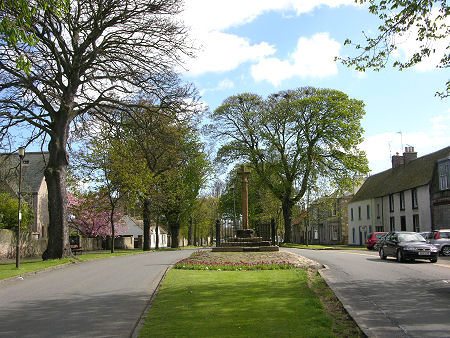 The Cross from the West |
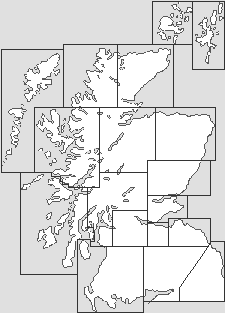
|
|
|
Visitor InformationView Location on MapWhat3Words Location: ///unroll.plants.dispenser |
 War Memorial War Memorial |
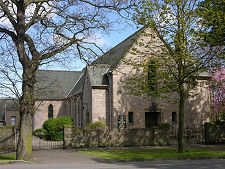 |
